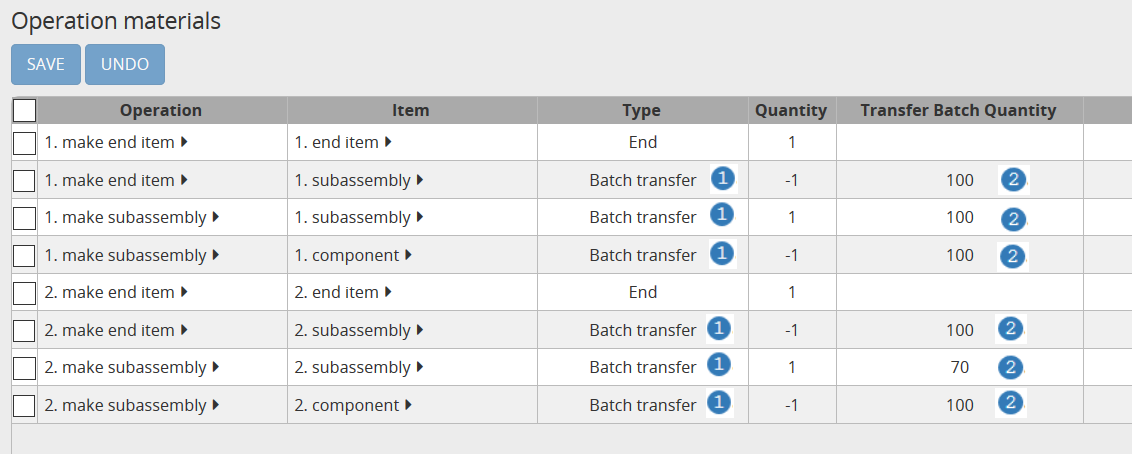Transfer batch
Important
Transfer batching refers to operations that are planned with some overlap. The subsequent operation can already start when the previous one hasn’t completely finished yet.
Material is produced and/or consumed in smaller batches at various points during the operation.

Check this feature on a live example
Download an Excel spreadsheet with the data for this example
The model contains 2 examples. The rows in the above screenshot show for each example:
the loading of the subassembly resource
A.the inventory between the assembly and subassembly operations
B.the loading of the assembly resource
C.
Modeling transfer batches is straightforward:

Set the type of the Operation Materials records to “Batch transfer”
1.Populate the field “transfer batch quantity” in the Operation Materials table
2. This defines the amount of material that is produced or consumed per batch.
You can easily modify the example. You will obtain different inventory profiles in the buffer between both operations when you vary the operation duration and/or the transfer batch quantity.
